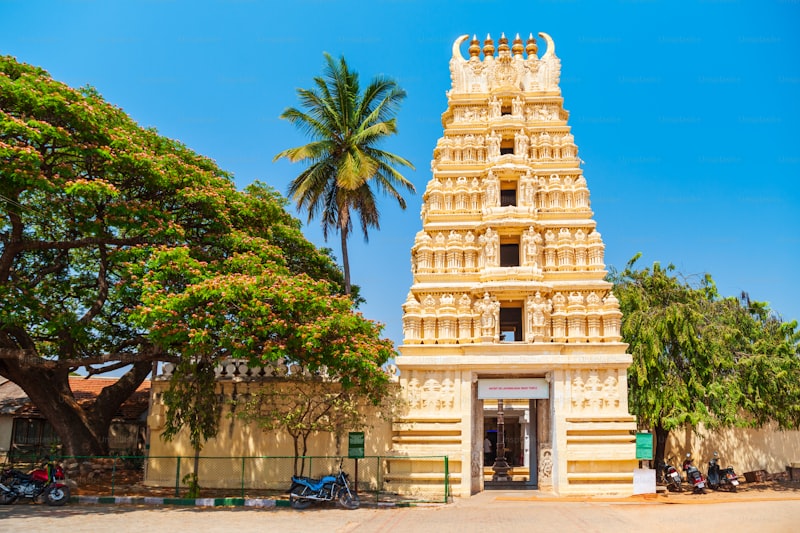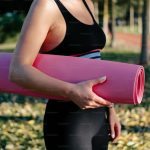Necks are amazing pieces of engineering. They are incredibly mobile yet support the head in a range of positions. Yoga can relieve neck pain or it can just as easily cause more problems. Do you know how to protect your students necks? Here’s what every yoga teacher should know about yoga and necks.
The Building Blocks
The neck, or cervical spine, is made up of seven bones, or vertebrae. These are piled one on top of each other with shock absorbing discs between each pair at all but two levels. This arrangement of bones and discs is one reason that the neck is so flexible — in fact it is the most flexible part of the whole spine with lots of movement in every direction, but due to this it’s also very susceptible to injury.
The spine is not straight when viewed from the side, but has gentle curves forwards and backwards like a series of S bends. In good posture, the curve in the neck moves gently forwards and is called the cervical lordosis. In this arrangement, the head and neck are balanced on top of the rest of the spine and there is minimal muscle work to hold it there.
Passing from vertebra to vertebra are a multitude of ligaments that allow the right amount of movement but not too much. And then there are lots, and I mean lots, of muscles to produce movement and basically prevent our heads falling off. Some muscles are tiny and work deep inside the neck to control movement between one vertebra and the next. Others, like trapezius, spread over large areas of the neck and shoulders.
See Also: The Yoga Teacher’s Guide to the Shoulder Muscles
What Could Possibly Go Wrong?
The neck is very complex piece of kit; a true marvel of nature. This complexity brings with it the potential for problems and neck pain is common in the general population. You will regularly see it in your students. But what causes neck problems?
- Posture — Poor posture takes the neck away from that position of balance and minimal work. Most commonly the chin juts forwards and the back of the neck is squashed – called ‘poking chin’ which describes it beautifully. This makes muscles work hard to keep the face pointing forwards and places excess tension on some of the ligaments of the neck. This imbalance leaves the overworked muscles sore and tight with the result of tender spots, neck pain and even headaches. Some ligaments also shorten into the posture and limit movement in some directions, often with painful consequences too.
- Mechanical neck pain — There are lots of problems in the neck that can cause neck and shoulder pain, headaches and even pain into the arm or hand. The neck is so complex that we can rarely identify one single structure to be at fault. There is usually a combination of joint, ligament, muscle and possibly disc problems all mixed together. The good news is that it frequently sorts itself out over a few days or weeks. Even if it is really bad, it usually responds really well to treatment and goes away completely.
- Vertebral artery — This artery supplies a significant percentage of the blood to the brain. It passes through the vertebra of the cervical spine going straight upwards to the second cervical vertebra. It then takes two sharp right angle turns outwards then up again as it passes through the first cervical vertebra and on into the brain. The artery has to stretch and squash alot as the neck moves and is particularly vulnerable to compression or over stretching at the extremes of rotation and extension.
Practising With Neck Pain
As I mentioned, neck problems are common. You will teach students that have pain and potentially limitations of movement in their necks. So how can you protect their necks and possibly improve their neck pain?
- Avoid pain — If a pose hurts, modify it so that it doesn’t. Maybe look forwards or down instead of up in trikonasana or parsvokonasana. Replace headstand with legs up the wall or consider sphinx as an alternative to cobra variations.
- Gently tuck chin in back bends — Students will tend to lift the chin in back bends and create a big hinge in the neck which can be painful. Cueing length through the back of the neck and a gentle drawing of chin towards chest (jalandhara bandha) to counteract the chin lift without making them look down is key here.
- Relax head in forward folds — Again, avoid a lifted chin. Encourage a completely relaxed head in Down Dog and standing forward folds, this can be really comfortable for students with neck pain as the weight of the head gives a little stretch to the neck and can actually relieve their pain. In seated forward folds aim for the natural curves with length and chin tuck as for back bends. Again, no hinges.
- Posture — Work on achieving the balance of head on shoulders in tadasana by cueing chin tuck and a long neck while drawing the shoulders down from the ears. Aim for chin over sternum not toes! This can give a lovely stretch through the neck and shoulders as it achieves better alignment of the head.
- No turtle necks — Work on drawing shoulders away from the ears with cues to align scapulae on chest wall or externally rotate the arms in poses like Warrior 1 and Down Dog. I also like to add an extra breath in trikonasana to focus on relaxing shoulders away from the ears on the exhale as the arms lift.
- Pranayama and meditaion — Neck pain can benefit hugely from these yogic practices which stimulate the parasympathetic nervous system, and relax muscle tone in overworked muscles as well as reducing anxiety and depression; improving mood and sleeping patterns in people with longstanding pain in particular.
How to Prevent Neck Pain
No one wants an injury from yoga and there are a few simple things you can do with your students that will protect them from harm on their yoga journey.
- Alignment — Aim to maintain a natural curve in the neck in most asanas and avoid the hinge-chin lift combo described above and you’ve set the foundation for neck health. Neck extension should never result on the head just hanging off the shoulders, keep muscles working and length throughout the movement. (Experienced practitioners may want to move into more neck extension in back bends and this can be done safely as long as the muscles on the front of the neck remain engaged to control the movement and no hinge is created.)
- Avoid extreme ranges of movement — To protect the vetebral artery and joints of the neck, don’t allow students to force their necks any further than they are comfortable. Be particularly vigilant for the extended and rotated neck. Aim for the neck to remain in line with the rest of the spine and keep length as it rotates in poses like trikonasana and parsvokonasana.
- Headstands — Encourage weight bearing through the forearms in headstands not through the head. The neck vertebrae are small and delicate, designed to support the weight of a head, about 5kg or 8% of the body weight. Though some well known yogis can, and do, balance their whole body on their heads the physio inside me says that this is probably not wise without a lifetime of practice and due consideration to what your body is telling you.
- Shoulder stands — Some schools of thought advise a folded blanket or blocks under the shoulders in this pose to allow the head to rest a little further back from the rest of the body in a shoulder stand. Try it for yourself, it certainly does make the pose more comfortable and avoids the extreme of flexion that could damage the neck.
See Also: Navigating an Injury: Don’t Let It Get between You and Your Mat
The Final Word
Necks are often forgotten as students strive for greater strength and more flexibility. A little care and attention can make such a difference to whether your students practice safely or get injured. A sore neck is no fun and should be avoided at all costs. You owe it to your students to protect them during your classes: think alignment, think posture, think tall in everything. It is easy when you know how… and now you do!













